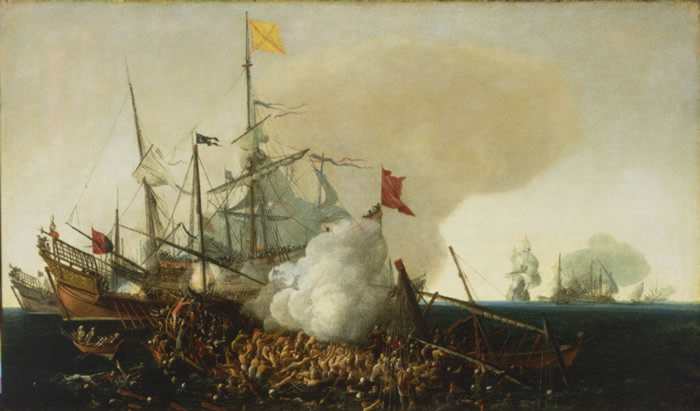Last weekend, during our annual spring Interpreter training, I shared an amazing BBC mini-series on 17th-century farm life, and I wanted to make sure everyone else got to hear about it too!
(I’ve actually already shared it a couple of times on this blog, including a recent article about stuffing straw mattresses. But this is a tv series any history buff should not miss, so I couldn’t resist re-posting a link!!)
The series, called Tales From the Green Valley, follows 5 historians and archaeologists as they live on a real 17th-century Welsh farm and perform the daily activities required to survive. Unfortunately the series is not available on DVD in US-format, but luckily all 12 episodes are available onDaily Motion:*
http://www.dailymotion.com/video/xqprv1_e1-tales-from-the-green-valley_lifestyle
These 12 episodes, one for every month of the year, offers a marvelous inside look at the daily lives of Stuart-era English farmers. They follow the agricultural year and show how much life was influenced by the seasons, in ways that modern society hardly notices anymore.
Throughout the year, we’ll be sharing more posts on seasonal activities, so stay tuned!
Hannah Howard, Volunteer Coordinator
*No copyright infringement intended, used for purely educational purposes


 Those of you that have walked the grounds of Pennsbury may have seen a building called The Worker’s Cottage. This reconstructed outbuilding’s original purpose or even existence is unknown, but we use it to talk about the laboring class’s lifestyle in early colonial Pennsylvania. Most people did not live as luxuriously as William Penn’s family. Most homeowners, or people who worked as an apprentice or slave for a homeowner, lived in a 1-2 room house similar to this.
Those of you that have walked the grounds of Pennsbury may have seen a building called The Worker’s Cottage. This reconstructed outbuilding’s original purpose or even existence is unknown, but we use it to talk about the laboring class’s lifestyle in early colonial Pennsylvania. Most people did not live as luxuriously as William Penn’s family. Most homeowners, or people who worked as an apprentice or slave for a homeowner, lived in a 1-2 room house similar to this. 











